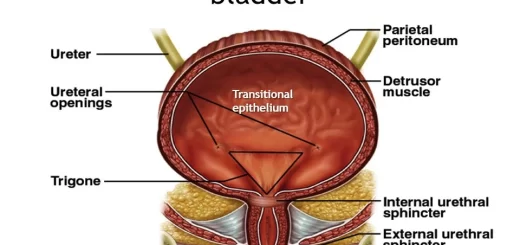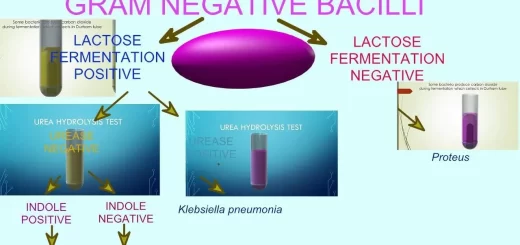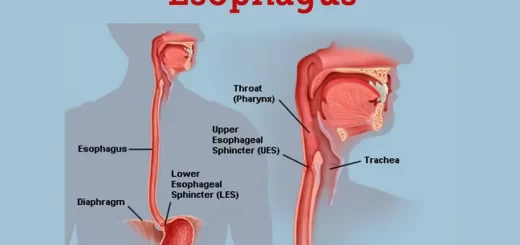Cerebellar cortex structure, function, location, layers and fibers
Sections in the cerebellum are easy to be recognized due to its foliate tree-like appearance. Each folium has an outer layer of grey matter forming the cerebellar cortex and an inner medulla of white matter is present in the center of each folium. The deep cerebellar nuclei are located in the white matter of each cerebellar hemisphere.
Layers of the cerebellar cortex
1. The molecular layer
It is the superficial layer and it contains few small association neurons and numerous unmyelinated nerve cells processes.
Neurons of the molecular layer are:
- Stellate cells are found near the surface.
- Basket cells are situated in the deeper part of the molecular layer. Basket cells have short dendrites and long axons arborizing around the cell bodies of Purkinje neurons in a basket-like fashion.
The cell processes of the molecular layer are:
- The extensive dendritic arborizations of Purkinje & Golgi cells.
- Axons of the granule cells in the granular layer.
- Climbing fibers reaching the cortex from the white matter.
2. Purkinje cell layer (ganglionic layer)
This middle layer is formed of large flask-shaped or pyriform, Purkinje nerve cell bodies with large nuclei. They are arranged as a single layer between the molecular and the granular layers, lying parallel to the surface of the folium.
Their numerous dendrites branch in a single plane in the molecular layer where they synapse with the axons of the granule cells and with the climbing fibers. Their axons leave the cortex; enter the white matter to form the efferent fibers of the cerebellar cortex.
3. The granular layer: the innermost layer. It is formed of:
Large number of granule cells which are small stellate cells with relatively large nuclei and little cytoplasm. The cells are densely packed having few short dendrites. Their axons are perpendicular and parallel passing into the molecular layer where they synapse with the dendrites of the Purkinje cells.
Golgi cells which are large stellate neurons scattered among the granule cells. They resemble Purkinje cells, except that their numerous dendrites fan out in different planes, and their axons are extensively branching but confined to the granular layer.
The fiber architecture of the cerebellar cortex
A. Afferent fibers: they are the fiber inputs to the cerebellar cortex, these are:
- Mossy fibers which constitute the majority of afferent fibers to the cerebellar cortex. They terminate in the granular layer by synaptic contacts with the dendrites of the granule cells forming mossy fiber rosettes.
- Climbing fibers which are the olivo-cerebellar fibers that they reach the molecular layer where they terminate by synaptic contacts with the dendrites of the Purkinje cells.
- Recurrent collateral fibers which arise from the axons of Purkinje cells and end on the dendrites of Golgi cells.
The cerebellar glomeruli: these are the complex synaptic regions between the mossy fiber rosettes, dendrites of granule cells, and axons Golgi cells. They characterize the granular layer of the cerebellar cortex.
B. Efferent fibers: these are the axons of Purkinje cells.
You can subscribe to Science Online on YouTube from this link: Science Online
You can download the Science Online application on Google Play from this link: Science Online Apps on Google Play
Cerebellum function, structure, anatomy, location & blood supply
White matter of the brain function, structure and Blood supply of the internal capsule
Anatomy of basal nuclei (basal ganglia) & Disorders of basal ganglia motor circuits
Function and Physiology of Thalamus, Hypothalamus & Limbic system
Diencephalon function, Thalamus, Metathalamus, Hypothalamus, Epithalamus & Subthalamus
Upper and lower motor neurons lesion, Stages of complete spinal cord transection



